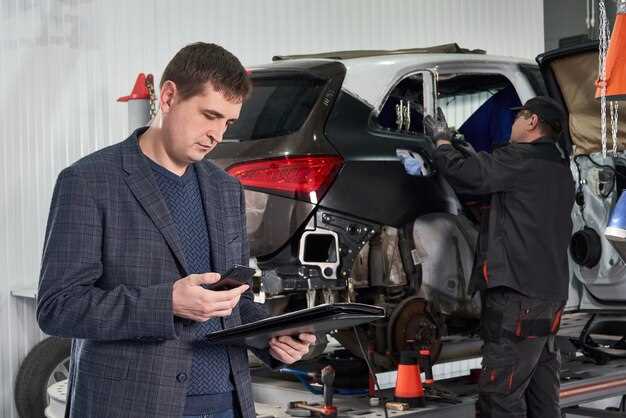

Maintaining a show car goes beyond just keeping it clean; it involves a series of meticulous tasks that ensure the vehicle remains in pristine condition. For car enthusiasts, every detail matters, and regular maintenance is essential to highlight the beauty and performance of these remarkable machines. Whether it’s for competitions, exhibitions, or simply for pride of ownership, understanding the essential maintenance tasks can help you preserve the integrity and allure of your show car.
Proper maintenance involves various aspects, including regular inspections, cleaning, and part replacements. The paintwork, chrome accents, and interior of the car are often the first things to catch the eye, making their upkeep a priority. Regular washing, waxing, and detailing ensure that the aesthetics of your show car remain flawless, while mechanical maintenance guarantees that it performs as brilliantly as it looks.
Moreover, preventative measures in maintenance practices can save owners from costly repairs in the future. By adhering to a schedule for tasks such as oil changes, tire rotations, and fluid checks, show car owners can enjoy the peace of mind that comes with knowing their prized possession is always in top condition. This article will explore the key maintenance tasks that every show car owner should consider, ensuring that their vehicle continues to turn heads and dominate car shows for years to come.
Regular Cleaning Techniques to Maintain Showroom Finish
To keep your show car in pristine condition, implementing regular cleaning techniques is essential. Here are some expert tips for maintaining that coveted showroom finish.
1. Wash Thoroughly and Gently
Start with a two-bucket wash method: one bucket with soapy water and another with clean rinse water. Use a pH-balanced car soap to avoid damaging the paint. Always use a soft microfiber wash mitt to gently remove dirt without scratching the surface.
2. Dry with Care
After washing, dry your car using a clean microfiber towel. Pat the surfaces gently instead of dragging the towel across the paint, which can lead to swirl marks. A leaf blower can also be handy for drying hard-to-reach areas, ensuring that water spots do not form.
3. Clay Bar Treatment
To achieve an ultra-smooth finish, periodically use a clay bar to remove embedded contaminants from the paint. This process restores the surface texture, making it easier for wax or sealant to bond and enhancing the overall shine.
4. Apply Wax or Sealant
Regularly waxing or sealing your show car every few months is crucial for protecting the paint. Use a high-quality carnauba wax for depth and richness of shine, or a synthetic sealant for longevity and durability. Apply it in a thin, even layer and buff off with a microfiber towel for optimal results.
5. Cleaning the Wheels and Tires
Your wheels and tires can dramatically affect the overall look of your vehicle. Clean them with a dedicated wheel cleaner and a soft brush to avoid scratching. Follow up with a tire dressing to give them a polished, finished look that complements the body of the car.
6. Interior Maintenance
Don’t neglect the inside of your show car. Regularly vacuum the interior and use appropriate cleaners for surfaces, such as leather and plastics. Condition leather seats to prevent cracking and fading, ensuring a consistent aesthetic throughout the vehicle.
7. Windows and Glass Care
For a crystal-clear view, clean all glass surfaces with a dedicated glass cleaner. Use microfiber towels to prevent streaks and ensure that visibility is unobstructed, contributing to the overall appeal of your show car.
By adhering to these cleaning techniques, you will be able to maintain the showroom finish of your car, ensuring it remains a standout at any event.
Essential Fluid Checks and Changes for Optimal Performance

Proper maintenance of your show car includes regular checks and changes of essential fluids to ensure optimal performance and longevity. Neglecting fluid levels can lead to significant issues, affecting not only the car’s performance but also its overall appearance. Here are some crucial tips for maintaining your vehicle.
Firstly, engine oil is fundamental for smooth operation. Regularly check the oil level using the dipstick, and change the oil according to the manufacturer’s recommendations. Consider using high-quality synthetic oil for better performance, particularly in show conditions where the engine may operate under higher temperatures.
Next, monitor the coolant level in the radiator and overflow tank. Coolant prevents the engine from overheating and protects against corrosion. It’s essential to flush the cooling system periodically and replace the coolant as specified in your maintenance schedule to ensure efficient heat dissipation.
Transmission fluid is another critical component. Check the fluid level with the dipstick, and look for any signs of contamination or burning smell. Change the transmission fluid periodically to maintain smooth gear shifts and to prolong the lifespan of the transmission system.
Don’t forget about brake fluid, which is vital for safety. Check for clarity and level; contaminated fluid can compromise your brakes. If the fluid is dark or has particles, it’s time for a full brake fluid change to ensure maximum stopping power and responsiveness.
Lastly, inspect the power steering fluid. Low levels may result in increased effort to steer your vehicle, diminishing performance. Regular checks and top-ups will help maintain smooth steering, crucial for show car maneuverability and handling.
In conclusion, regular fluid checks and changes are indispensable for maintaining your show car’s performance. Adhering to these maintenance tips will help you avoid costly repairs and keep your vehicle in pristine condition for every show.
Inspection and Care for Custom Parts and Accessories

Custom parts and accessories significantly enhance the aesthetics and performance of show cars. Regular inspection and care are essential for maintaining their functionality and appearance. Here are some valuable tips to ensure these components remain in optimal condition.
First, regularly inspect custom parts for any signs of wear, damage, or corrosion. Pay close attention to areas that are exposed to the elements, such as chrome plating or painted surfaces. Protecting these parts with high-quality wax or sealant can prevent deterioration and maintain their shine.
Next, ensure that all custom accessories, such as spoilers, body kits, and custom grills, are securely mounted. Loose parts can lead to misalignment or further damage while driving. Regularly checking the fasteners and brackets will prevent unexpected issues during shows or events.
Cleaning is another critical aspect of maintenance. Use appropriate cleaning products that are safe for custom materials to avoid damage. Gentle washing methods, such as microfiber cloths, can effectively remove dirt without scratching finishes. Consider detailing services for a comprehensive clean that reaches hard-to-access areas.
For performance-enhancing accessories like aftermarket exhaust systems or air intakes, regular inspection for leaks or blockages is vital. Ensuring these parts function correctly contributes to overall vehicle performance. Replace worn-out gaskets and filters as part of your routine maintenance schedule.
Lastly, maintain a comprehensive record of all custom parts, including installation dates and any maintenance performed. This documentation will be beneficial for future reference and can increase the value of your car if you decide to sell it. Taking the time to inspect and care for custom components will ensure that your show car remains impressive and performs at its best.






